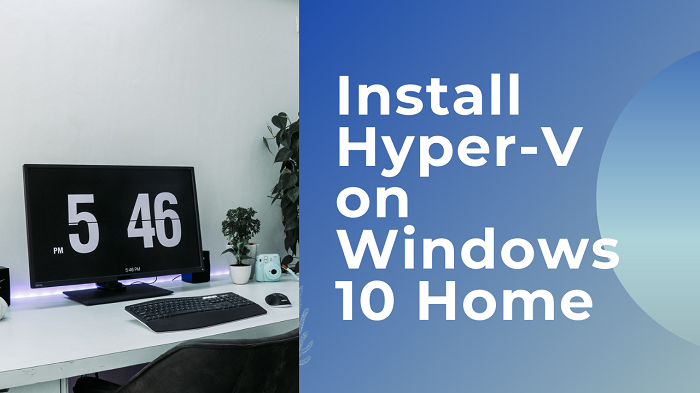

Turn on Hyper-V in Windows 10 using Command Prompt If you cannot enable Hyper-V in the Turn Windows Features on or off section, make sure your processor is compatible with virtualization technologies and you have enabled virtualization in BIOS/UEFI. Now you can find Hype-V Management Tools in the Start menu to install a new virtual machine or use an existing one. Wait for Windows to download and install the required components.These include Hyper-V Management Tools and Hyper-V Platform Place checkmarks next to all options under the Hyper-V entry.In the list of optional features, locate Hyper-V and expand it.It does not matter how you get to the needed section of the Control Panel, so you can use whatever suits you better. Alternatively, press Win + R and enter Control (you can use any other preferred method to run the classic Control Panel.) Go to Programs and Features > Turn Windows Features on or off.You can also run that interface by pressing Win + R and using the optionalfeatures command. Click on Turn Windows Features on or off.Open the Start menu and start typing Turn Windows Features on or off.Now, let us show you how to enable Hyper-V in Windows 10: Remember, though, that your hardware should be compatible with virtualization technologies. You can still use virtual machines with help from free third-party apps, such as VMWare Workstation Player. If you have a computer with Windows 10 Home, do not give up. In the 2 days, the only other change I made was switching to a local account for Windows, for other reasons, which presumably didn't effect it.Tip. Suspiciously, it didn't seem to work immediately, and I tried 2 days later and it magically worked this time. After updating it, I was able to enable Virtualization in BIOS and boot Windows. I'm at my wits end right now, and any help would be greatly appreciated!Įdit2: Solved! I believe the issue was that I had an old version of BIOS installed, from before WSL2 was released.


I would just go and use WSL 1, but this issue on GitHub has multiple comments claiming that they run it on Windows 10 Home, and reference this from Microsoft that says WSL 2 is available on Windows 10 Home. I looked it up and Microsoft says that you cannot install Hyper-V on Windows 10 Home, which I have. When I booted into BIOS and enabled Virtualization, I was unable to run windows (it kept trying to diagnose the error, and wouldn't run) until I un-enabled Virtualization back in BIOS. I checked and I don't currently have it enabled in firmware. I looked it up and found this error report, and the comments said I need to have virtualization enabled in BIOS. I'm trying to follow the instructions here to install WSL2, but I'm getting stuck at Step 7 with this error.


 0 kommentar(er)
0 kommentar(er)
